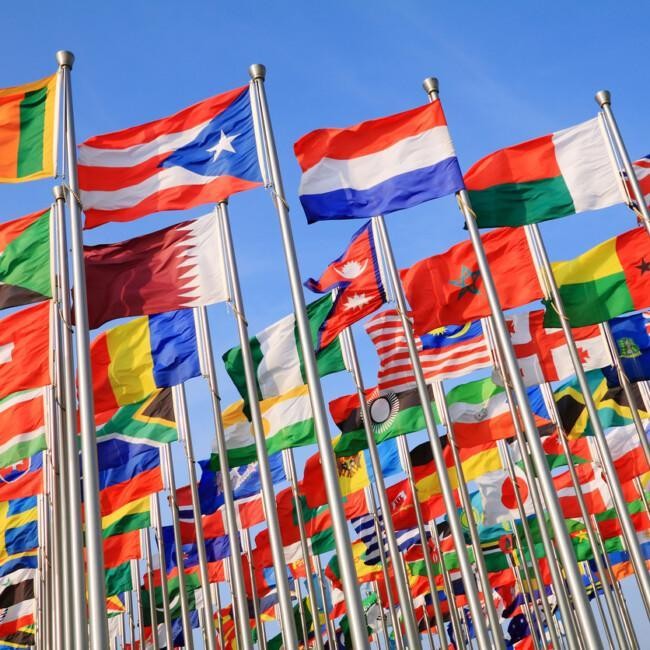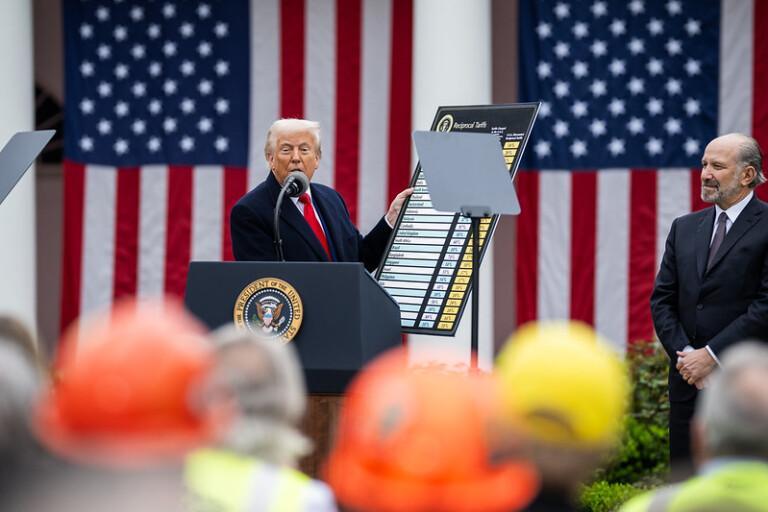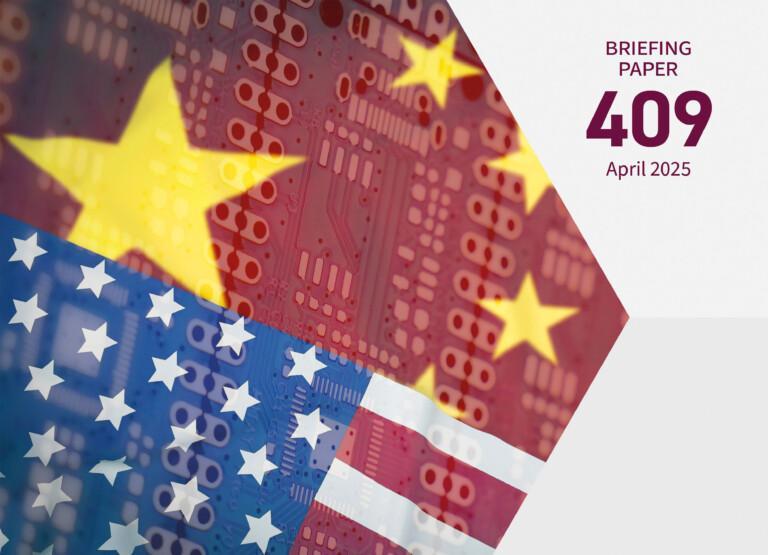
Ydinaseet ovat tulleet takaisin kansainvälisten turvallisuuskysymysten keskiöön vuosikymmenten tauon jälkeen. Pohjois-Korea on osoittanut merkittävää kehitystä ydinase- ja ballistisissa ohjusohjelmissaan viime kuukausina. Yhdysvaltain presidentti Donald Trump on uhannut vetäytyä Iranin ydinohjelmaa koskevasta sopimuksesta. Lisäksi yli 40 maata on allekirjoittanut maailman ensimmäisen laillisesti sitovan ydinaseiden kieltosopimuksen. Samaan aikaan Venäjän sotilaallinen kehitys ja ”sapeleiden kalisteluksi” tulkittu toiminta saa Naton keskittymään yhä enemmän ydinasekysymyksiin. Yhdysvaltain, Britannian ja Ranskan ydinaseiden modernisointiohjelmat eivät ole pelkästään vastaus Venäjälle, mutta Moskova todennäköisesti kuvaa niitä sellaisiksi.
Suomen turvallisuus ja varaus ovat yhä enemmän riippuvaisia vakaasta ja turvallisesta kansainvälisestä ympäristöstä. Uudet strategiset tosiasiat voisivat vaikuttaa siihen perustavanlaatuisesti. Sotilaallisen vastakkainasettelun uhka pohjoismaiden alueella on tällä hetkellä matala verrattuna Aasiaan ja laajemmin Lähi-itään, mutta se ei ole täysin olematon. Suomesta ei tule ydinasemaata. Maan osaaminen ydinasekysymyksissä on perinteisesti keskittynyt aseiden leviämisen estämiseen (kansainvälisten sopimusten ja EU:n kautta) ja asevalvontaan, mutta se on heikentynyt vuosikymmenien kuluessa. Suomen pitäisi muuttaa tätä kulkua ja vahvistaa ydinaseiden roolin ymmärrystä alueellisena ja globaalina pelotteena.
Introduction
Strategic issues involving nuclear weapons are once again at the forefront of international security concerns. Changes in the security environment threaten to halt or reverse progress in reducing nuclear arsenals, the risk of their use, and the spread of nuclear weapons beyond the nine states either declared or considered to hold them.1
Resorting to nuclear weapons anywhere on the globe would have profound geostrategic, humanitarian, and economic consequences. Small countries far removed from the conflict zone would not be immune to its aftershocks. This would be true for Finland and other EU member states, whose prosperity and security increasingly depend on a secure and stable international environment.
This paper describes ongoing nuclear weapons-related developments, and outlines their implications for Finland. It also recommends enhancing Finnish expertise in a range of strategic issues.
Nuclear risks: the new realities
The end of the Cold War opened up opportunities for reducing the risk of nuclear war, the proliferation of nuclear weapon states, and the size of nuclear arsenals through both negotiated and unilateral steps.2 Despite progress in some areas, there have been setbacks in others. Then Vice-President Joe Biden acknowledged this mixed picture in January 2017. After listing the Obama administration’s accomplishments – in strategic arms reductions, non-proliferation, and international cooperation to improve security for nuclear installations and materials – Biden observed: “(S)trategic stability with Russia…has eroded over the past few years”.3
Today, new nuclear realities are taking shape. They vary from region to region, involve different nuclear and missile capabilities, and require complex judgments on how best to deter nuclear or non-nuclear aggression.
Tensions in Asia
North Korea’s nuclear ambitions date back to the 1990s, but its recent actions – detonating a device with an estimated yield many times greater than the weapons that destroyed Hiroshima and Nagasaki, and testing new ballistic missiles assessed as being capable of striking US territory, Japan, and South Korea— have sharply increased the risk of military conflict. Short of crossing the nuclear threshold, North Korea could inflict massive casualties on the South using conventional artillery and chemical weapons deployed near the Demilitarized Zone. US Defence Secretary James Mattis warns that a “military solution” would be “tragic on an unbelievable scale”.
The spike in tensions has raised new questions regarding the credibility of US defence guarantees. Recent polls show majorities of South Koreans favour a national nuclear weapons capability and the reintroduction of US non-strategic nuclear weapons based in their territory. Others in the region are “weighing their options”.
A failure of deterrence in Korea would have dramatic consequences. These might include: a sharp deterioration in US relations with China and Russia, which border North Korea; a reappraisal of US alliances with South Korea and/or Japan, especially if Washington were viewed as partly responsible for the conflict; and the transfer of US military assets from Europe to meet urgent warfighting and stabilization tasks in Asia.
Korea is not the only potential Asian hotspot. India and Pakistan have narrowly avoided a major war over the past decade. According to recent reports, India has weighed the possibility of pre-emptive nuclear strikes against Pakistan’s nuclear arsenal. For its part, Pakistan is reportedly increasing its stock of “battlefield” nuclear weapons, which many analysts believe would heighten the risk of their early use in a crisis and offer a tempting target for seizure by terrorists.
Russia, NATO, and the “nuclear allies”
Americans and Europeans might not fully agree on the details of Russia’s evolving strategic doctrine, intentions, or appetite for risk-taking. However, they broadly agree on Russia’s impressive investment in nuclear modernization programmes, lack of interest in further deep reductions in strategic arsenals (or any meaningful limits on its large stockpile of non-strategic nuclear weapons), and practice of “nuclear sabre-rattling”. When such developments are set in the context of Russia’s conventional force improvements, there is little doubt that Moscow aims to increase its overall capability for power projection and make it more difficult for NATO to assist a threatened ally or partner.
In response, NATO is implementing its commitment, restated at the 2016 Warsaw Summit, to ensure that its nuclear deterrent remains safe, secure, and effective, and that allies retain the “broadest possible participation” in nuclear burden-sharing. NATO has criticized the Treaty on the Prohibition of Nuclear Weapons (TPNW) for “disregard(ing) the realities of the increasingly challenging international security environment” and putting the existing non-proliferation structure at risk. NATO’s statement also pointedly calls upon its “partners and all countries who are considering supporting this treaty to seriously reflect on its implications for international peace and security”.4
Meanwhile, the “nuclear allies” are modernizing their deterrents. Successive centre-right and centre-left governments in the United Kingdom and France have concluded that an independent nuclear deterrent must remain a critical element of their national security strategy. Although concerns regarding Russia no doubt influence current UK and French assessments, their national security strategy documents make it clear that nuclear threats to their vital national interests could arise from other states as well.
Hence, in late 2016 the United Kingdom began constructing the first of four ballistic missile submarines to replace its current fleet, beginning in the early 2030s. Meanwhile, President Emmanuel Macron reaffirmed his decision to renew both components of the French deterrent of four ballistic missile submarines and three squadrons of “dual-capable” aircraft (DCA).5
The Pentagon is expected to complete the US Nuclear Posture Review (NPR) in early 2018. The NPR will likely reaffirm longstanding tenets of US nuclear policy and recommend renewing the US nuclear “triad” of land-based intercontinental ballistic missiles, submarine- launched ballistic missiles, and long-range air-launched cruise missiles delivered by strategic bombers.6 This effort will stretch over decades and, according to government estimates, will cost around $400 billion over the next decade, or six per cent of the annual defence budget (as opposed to three per cent currently).
The NPR might also unveil some significant policy shifts foreshadowed in a May 2017 report by prominent non-government experts.7 For example, the report recommended explicitly setting deterrence of aggression and assurance of allies as the priority goals of US nuclear policy. This would relegate non-proliferation, preventing nuclear terrorism, and reducing the role of nuclear weapons in US strategy – the top priorities set by the Obama administration – to a lower rank, and open the door to a possible expansion of the US arsenal. The report also suggested extending NATO’s DCA arrangements to some Eastern European allies, while deploying US DCA to Japan and South Korea. While not ruling out new arms control measures with Russia, the experts advised strict preconditions for talks, such as an end to the Russian violation of the 1987 Intermediate Nuclear Forces (INF) Treaty.8
Missile defence is the subject of a separate review, which will also stir controversy. President Trump has promised a major boost in spending for missile defence. Some administration advisors reportedly favour expanding their scope to counter ballistic and cruise missile threats from Russia and China. If adopted, this would be a major break from the Obama and Bush administrations, which focused on protecting US and allied territory and forces against limited North Korean and Iranian missile threats.
Iran
President Trump has called for renegotiation of the 2015 Joint Comprehensive Plan of Action (JCPOA.) Under the JCPOA, Iran agreed to restrict certain nuclear activities in return for relief from sanctions imposed by the United States, the EU, Russia and China. His stated objective is to extend the scope and duration of JCPOA restrictions on Iran while making Western compliance conditional upon changes in Iranian behaviour outside the nuclear arena – such as ending its support for proxies in Syria, Lebanon, and Yemen. However, he also warned that if his administration is unable to “reach a solution working with Congress and our allies…the (JCPOA) will be terminated”.
Iran has categorically rejected any renegotiation of the JCPOA. This sets the stage for a protracted deterioration of relations between Washington and Teheran, which already back opposing sides in several Middle East conflicts and in Afghanistan.
Trump’s decision has also roiled transatlantic relations. UK Prime Minister Theresa May, German Chancellor Angela Merkel, and President Emmanuel Macron issued a joint statement affirming that they “stand committed” to the accord. The three US allies worked hard to achieve the JCPOA, fearing that an unfettered Iranian nuclear programme would lead to wider proliferation in the region, and ultimately a US military intervention with unpredictable consequences.
Implications for Finland
The fact that Finland’s security and prosperity increasingly depend on a secure and stable international environment is hardly a new or controversial proposition.9 However, the aforementioned new realities pose real risks to that security and prosperity.
Changes in the strategic environment related to Russia, NATO, and the “nuclear allies” directly affect Finnish security interests. Russian “nuclear sabre-rattling” directed at Denmark, Norway, and Sweden demonstrates that neither the presence of nuclear weapons in one’s territory nor membership in the Alliance are necessary to become the objects of such threats. Russia’s nuclear and conventional force improvements, deployments, and exercises are shortening warning times for military crises and, perhaps, lowering the Russian threshold for using force.
Indeed, NATO-Russia and US-Russia relations might worsen in the coming months. Moscow would condemn any suggestion in the Pentagon reviews that NATO should extend its nuclear burden-sharing to involve East European allies, or that US or NATO missile defence be reoriented to counter Russian systems. In light of President Vladimir Putin’s recent statement that “we have complied and we will comply with our old treaties, as long as our partners comply as well,” the prospects appear bleak for resuming any US-Russian dialogue on arms control.10 In a deteriorating atmosphere, Moscow might take aim at the increased cooperation between NATO and its Nordic partners. While the threat of a military confrontation in the Nordic region is low in comparison with Asia, it cannot be seen as non-existent. Russian leaders, for example, periodically warn that they would take unspecified “countermeasures” in response to any further NATO enlargement.11
Regarding the JCPOA, Finland’s fellow EU members – especially Germany, France, and the United Kingdom – will expect full support for their position to the effect that the international community must not dismantle the JCPOA as long as it functions. However, if the Trump administration implements its threat to terminate US participation, Washington will face a major tussle with Europe over whether to impose “snap back” UN sanctions on Iran. Finland’s interest in maintaining political solidarity within the EU does not obviate its need to understand the technical arguments for assessing Iran’s compliance with the JCPOA and its nuclear “breakout” potential if the agreement were to collapse.
The North Korean standoff could unravel with little warning. In the event of war, especially if nuclear weapons were used and/or nuclear debris were released by attacks on North Korean facilities, Finnish citizens in the region might require emergency evacuation and medical care. The Finnish government would face calls in the UN or EU to express solidarity with, or condemnation of, one of the belligerent sides, and to contribute to multilateral humanitarian assistance efforts. Moreover, a failure of US deterrence strategy in Korea would raise questions in Europe about America’s political will and military capability to deter aggression on this continent.
Similarly, if war erupted between Pakistan and India, Finnish citizens in the region would be at risk, and the humanitarian consequences would be catastrophic. Finland would face calls to join multilateral evacuation and relief efforts. In short, any notion that Finnish interests would be unaffected by a major conflict in “faraway” Korea and South Asia would prove illusory.
A case for enhanced Finnish understanding
As a rule, Finnish discussions of nuclear weapons are very circumspect. Since the Cold War, officials and non-government experts have focused their analysis and engagement on non-proliferation (via international agreements and EU initiatives) and arms control. They have devoted less attention to the strategic landscape involving nuclear weapons programmes, evolving doctrines, and missile defence. In addition, the contribution of Western nuclear forces to deterrence rarely receives explicit acknowledgment.
Although ideological opposition to nuclear weapons appears more prevalent in Sweden, a certain moral opprobrium associated with such weapons exists in Finland as well. Anti-nuclear sentiments might intensify following the Norwegian Nobel Committee’s decision to award its coveted Peace Prize to the International Campaign to Abolish Nuclear Weapons.
Some Finns might be concerned that more public discussion of nuclear weapon-related issues would be politically polarizing. In Sweden’s case, the government (a coalition of the Social Democratic Party, or SDP, and Green Party) voted, in December 2016, for a resolution in the First Committee of the UN General Assembly to negotiate a legally binding instrument to prohibit nuclear weapons.12 In July, Sweden approved the text of the TPNW. Yet, two months later, the government deferred a decision on whether to actually sign the Treaty due to sharp differences between the foreign minister (who favoured signing) and the defence minister (who opposed it.) The fact that both ministers belong to the SDP only served to make the situation even more politically awkward.
In addition, some might see a more public discussion as unnecessary and/or strategically counterproductive. Finland will never acquire or host nuclear weapons on its territory, as this would violate its longstanding commitments under the Treaty on the Non-Proliferation of Nuclear Weapons (NPT) and national law. Why, then, should it risk being “drawn” into debates on nuclear weapons where differences exist among Europeans and where Russian sensitivities are obvious?
The answer, to paraphrase Leon Trotsky’s dictum on war, is: “You may not be interested in nuclear weapons, but nuclear weapons are interested in you”. Hence, Finland should consider three broad approaches consistent with its national sovereignty and interests in solidarity with its closest European and transatlantic partners.
Enhanced understanding of deterrence
The Finnish strategic community — government officials, parliamentarians, and think tanks — needs to stay abreast of changes in the strategic environment and nature of deterrence.
Although Finland is not a NATO ally, its growing national defence effort (in areas such as enhanced readiness and increased investment) contributes to conventional deterrence of potential aggression in the Nordic-Baltic region. The newly established European Centre of Excellence for Countering Hybrid Threats in Finland provides participating nations, the EU, and NATO with new capabilities to identify vulnerabilities and develop national and organizational resilience – another way of strengthening conventional deterrence.
The EU’s common foreign and security policy contributes to important non-proliferation objectives – for example, through JCPOA implementation and sanctions on North Korea. However, it will remain a marginal actor in decisions involving the role of nuclear weapons in Europe. Despite a flurry of interest earlier this year in a hypothetical “European deterrent”, there is no sign that France or the UK (especially post-Brexit) would offer their nuclear forces as a substitute for US “extended deterrence”, under either bilateral or EU-led arrangements.
Enhanced understanding of the nuclear dimensions of deterrence would complement, not detract from, Finnish interest in non-proliferation and arms control. Conversely, failure to keep abreast of the evolving and increasingly integrated nature of Russian doctrine, capabilities, exercises, deployments, and strategic messaging increases the risk of overreaction or passivity; either could encourage more destabilizing Russian behaviour. Failure to understand the changing dynamics of deterrence and the role of nuclear weapons would also leave Finland less prepared to anticipate and react to crises outside Europe.
Finland has the necessary basic institutional structures to regain and sustain governmental expertise. In some cases, high-level direction to conduct studies, recruit and train personnel, and hold realistic crisis management simulations will be required. That said, as a partner, Finland does not have access to the full range of information sharing and joint assessments available within NATO.
Avoiding prejudicial statements
Sweden’s recent experience with the TPNW reflects its particular domestic political circumstances. It also shows the inherent risk of advocating a principled position that appears to contradict the government’s actual conduct. It was not lost on foreign observers that some Swedish officials were advocating signing the Treaty while others were welcoming the participation of two nuclear powers, the United States and France, in Sweden’s largest military exercise in decades, Aurora 17. Indeed, Sweden’s defence ministry acknowledged that Aurora 17 was aimed at strengthening “deterrence” and exercising Sweden’s defence capability “against a larger, sophisticated opponent”.
If one accepts that Finland has a vital interest in maintaining peace and security in its region, and that this will require a continuing role for nuclear weapons as part of an effective deterrent against aggression, then Finland logically should take a long and hard look before joining efforts that delegitimize the possession of nuclear weapons or dilute the primacy of the NPT. The three nuclear allies are not the only ones opposed to such efforts; many non-nuclear allies, including Finland’s close neighbours, who are members of NATO and the EU, also have strong objections to the TPNW.
A “Next Generation” initiative
Some Finnish experts might be sceptical about the need for a more open and informed discussion of deterrence concepts and, in particular, the role of nuclear weapons. Indeed, apparently no Finnish university (including the National Defence University) offers a regular course specifically dedicated to deterrence, nuclear weapons, and missile defence.
Similar concerns exist elsewhere in the Nordic region. Yet others in Finland – along with counterparts in Sweden, Norway, and Denmark – have bemoaned their countries’ loss of expertise in strategic affairs. Thus, a collaborative effort among the Nordic countries would make sense.
As allies, Norway and Denmark support NATO nuclear policy declarations, which are agreed by consensus. Still, their longstanding policies: a) bar the stationing of nuclear weapons on their territory in peacetime; and b) effectively exclude their air forces from any direct role in conducting possible nuclear strike missions. Nonetheless, centre-left and centre-right governments in both countries have confronted anti-nuclear sentiments among political parties and public opinion.
As partners, Finland and Sweden participate in NATO-led operations, capability-development efforts, military exercises and, increasingly, in political-military consultations. Sweden, too, has been active in non-proliferation and arms control. Nevertheless, they have different experiences regarding nuclear weapons: for more than 20 years, Sweden (unlike Finland) explored options to develop a small nuclear force.
Despite their differences, all four countries will need a cadre of government and military experts able to track, analyse, and help formulate policy recommendations for decision-makers. The four already have bilateral and multilateral fora for defence and security cooperation, and their research institutes have good relations with each other and with US, British, and French counterparts.
Thus, Finland, Sweden, Norway, and Denmark should consider a cooperative initiative led by think tanks – and with appropriate government support – to ensure that their next generation of strategic thinkers and government advisers will be prepared to deal with the new realities coming their way.
Endnotes
1 The United States, Russia, France, the United Kingdom, China, India, Pakistan, North Korea, and Israel. This paper should be read in conjunction with FIIA Working Paper 93, February 2017.
2 Michel, Leo, NATO as a Nuclear Alliance: Background and contemporary issues, FIIA Working Paper 93, 2017. https://fiia.fi/en/publication/661/nato_as_a_nuclear_alliance/, accessed 21 November 2017.
3 The White House, Office of the Vice President: Remarks by the Vice President on Nuclear Security, 11 (12) January 2017. https://obamawhitehouse.archives.gov/the-press-office/2017/01/12/remarks-vice-president-nuclear-security, accessed 21 November 2017.
4 NATO: “North Atlantic Council Statement on the Treaty on the Prohibition of Nuclear Weapons”, 20 September 2017. http://www.nato.int/cps/en/natohq/news_146954.htm, accessed 21 November 2017.
5 Combat aircraft capable of delivering nuclear or conventional weapons.
6 Democratic and Republican administrations have argued that nuclear weapons: provide a deterrent against aggression (nuclear or non-nuclear) aimed at the United States or its allies; underpin US ability to deploy conventional forces worldwide; and, by providing “extended deterrence” to non-nuclear allies, will dissuade them from acquiring their own nuclear arsenals.
7 National Institute for Public Policy: “A New Nuclear Review for a New Age”. National Institute Press, April 2017. http://www.nipp.org//data/wordpress/htdocs/wp-content/uploads/2017/06/A-New-Nuclear-Review-final.pdf, accessed 21 November 2017.
8 In 2014, the Obama administration declared that Russia had violated the INF prohibition on developing and testing a new intermediate-range ground-launched cruise missile. Russia reportedly deployed the missile in late 2016.
9 Prime Minister’s Office: “Government Report on Finnish Foreign and Security Policy”, Publications 9/2016. http://valtioneuvosto.fi/documents/10616/1986338/VNKJ092016+en.pdf/b33c3703-29f4-4cce-a910-b05e32b676b9, accessed 21 November 2017. Prime Minister’s Office: “Defence Report Prime Minister’s Office”, Publications 7/2017. http://www.defmin.fi/files/3688/J07_2017_Governments_Defence_Report_Eng_PLM_160217.pdf, accessed, 21 November 2017.
10 Valdai Discussion Club: “Vladimir Putin Meets with Members of the Valdai Discussion Club”. Transcript of the Plenary Session of the 14th Annual Meeting, 19 October 2017. http://valdaiclub.com/events/posts/articles/putin-meets-with-members-of-the-valdai-club/, accessed 21 November 2017.
11 The EU has not been spared Putin’s criticism; at Valdai, he said “Europe is to blame” for Ukraine.
12 Finland abstained on the resolution.










